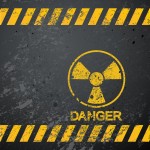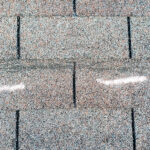The recent truck fire and radiation release from the government’s troubled nuclear waste dump in southeastern New Mexico were “near misses” at a facility whose workers proved unprepared to respond to the emergencies, the head of an independent oversight agency said.
Defense Nuclear Facilities Safety Board Chairman Peter Winokur also said the Feb. 5 underground truck fire at the Waste Isolation Pilot Plant was preventable, and that the initial response to a radiation release that contaminated 17 employees working above ground nine days later was unsatisfactory.
“As a result, the internal contamination level of workers, although minor, was nevertheless greater than necessary,” Winokur wrote Friday in response to a query from New Mexico Sens. Tom Udall and Martin Heinrich. “The local WIPP Emergency Operations Center was ineffective, and the DOE (Department of Energy) emergency center at headquarters in Washington, D.C., was never notified, as would have been appropriate.”
 Winokur’s letter was the second critical assessment of the plant’s operations, safety procedures and emergency response to the back-to-back incidents.
Winokur’s letter was the second critical assessment of the plant’s operations, safety procedures and emergency response to the back-to-back incidents.
A series of shortcomings were cited two weeks ago by a team that investigated the truck fire. Officials have yet to get underground to figure out what caused the radiation release.
Udall and Heinrich requested the assessment from Winokur, who is head of the independent federal agency charged with overseeing public health and safety issues at Department of Energy defense-related nuclear facilities.
Much of the letter repeated findings of the accident-review team. But Winokur also noted that his agency has since 2010 sent four letters to the Department of Energy about flaws in the dump’s fire-prevention program. Incremental improvements were made, but some key issues were not adequately addressed, he said.
Winokur also said that while the cause of the radiation release is not yet known, “significant improvements in the safety strategy for the dump are warranted to address design basis accidents that lead to radiation releases.”
“We don’t expect anything above ground to receive any radiation contamination, none whatsoever,” Winokur said in a telephone interview Tuesday.
Before the accidents, the dump operated for 15 years with a solid safety record. But critics have said the dump doesn’t value safety as much as it should.
Winokur said his agency is “trying to get a sense of whether over time there has been a little less rigor in operation.”
Also Tuesday, Udall and Heinrich announced that the Environmental Protection Agency was sending portable air monitors to the dump to provide independent testing of the air there and in the Carlsbad area.
“EPA has made it clear that it does not believe that the radioactive releases from WIPP are a public health danger, and we fully expect these additional monitors will provide extra support to help ease any concerns that the public may have,” the senators said in a statement.
The dump is the nation’s only permanent underground repository for low-level radioactive waste, including things like plutonium-contaminated gloves, tools and protective clothing, from nuclear weapons facilities.
The plant near Carlsbad stopped taking all waste shipments after the underground truck fire, and all operations have been shuttered since the radiation release on Feb. 14, Valentine’s Day.
Was this article valuable?
Here are more articles you may enjoy.


 Catastrophe Bonds Absorb ‘Black Swan’ Event Dealt by Melissa
Catastrophe Bonds Absorb ‘Black Swan’ Event Dealt by Melissa  Viewpoint: Beware the Rise in Unproven ‘Brittleness Test’ for Roof Shingle Claims
Viewpoint: Beware the Rise in Unproven ‘Brittleness Test’ for Roof Shingle Claims  What Progressive and GEICO Q3 Results Reveal About Auto Insurance Profit, Growth
What Progressive and GEICO Q3 Results Reveal About Auto Insurance Profit, Growth  Don’t Look Now, But Citizens Is No Longer the Largest Property Insurer in Florida
Don’t Look Now, But Citizens Is No Longer the Largest Property Insurer in Florida 

